In this tour of the wine country, I’m taking you to the Wine Country of Italy. The Italians are another of the Old-World Wine countries. Consequently, they make wine and treat wine much like the people in France and Germany. As well as, other Old-World Wine countries. These connoisseurs of fine Old-World Wine treat wine as part of their meal. Wine is as essential as a fork during a meal. So, grab a cup of coffee or wine, sit back and enjoy the tour.
The History of the Wine Country of Italy
The Greeks that settled on the Island of Sicily realized that the rich volcanic soil of the region was ideal for grape cultivation. So they brought grapevines to Sicily and started the first vineyards. Then the Etruscans, a group of people who settled in Central Italy from the region of what is currently western Turkey. They started vineyards in the region of Tuscany. The Etruscans were experts in winemaking and developed many of the best techniques of winemaking. Winemaking has had its improvements since then. But they were the innovators that made wine fermentation and also storage technology leaps that started about 4,000 years ago. According to Sedimentality, “The Etruscans took the grapevine introduced by the Greeks, cultivated it into highly desirable wines. Then made considerable improvements on winemaking.”
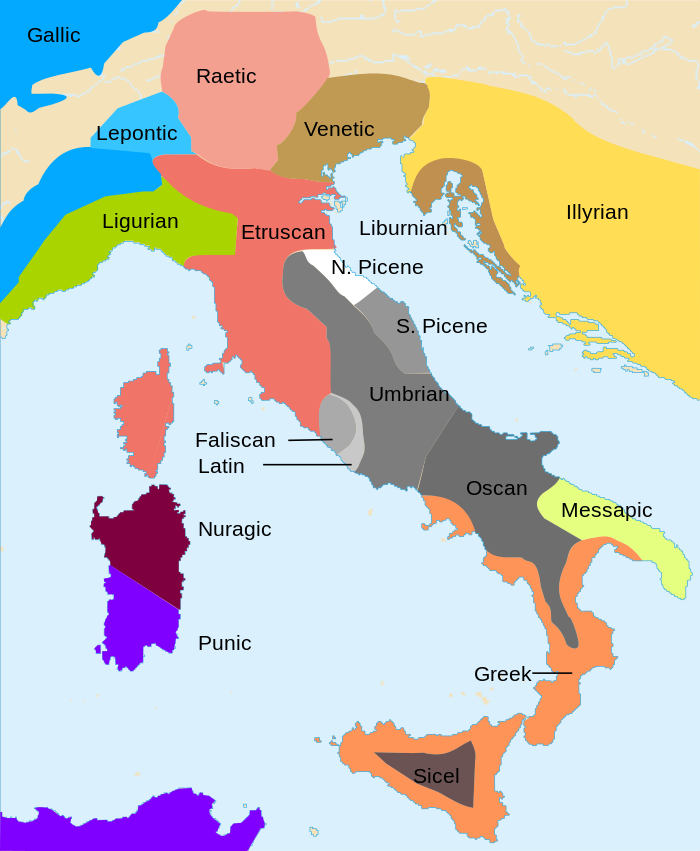
The Roman Historical Influence of the Wine Country of Italy
The Roman demand for wine started building almost immediately after the Greeks and Etruscans introduced wine to the region. Then, they took the art of winemaking to the next level. They improved grape presses to extract more juice. They were also instrumental in discovering which variety of grapevine thrived in specific regions, climates, and soils. From this point, as the Roman Empire expanded. Thus, winemaking also expanded into Europe. They brought their improved winemaking techniques to the countries that we now know as the Old-World Wine countries. They also pushed East into countries like Turkey and the Holy Land. Therefore, bringing their winemaking improvements to these regions. The regions of the Middle East where winemaking began.
Governing Body and Production of the Wine Country of Italy
In the late 19th and early 20th century, the vineyards of Italy were getting a bad reputation for producing poor quality wine. Because of that, the governing body DOCG was created to create stricter rules. Improving the overall quality of Italian Wine. They succeeded and Italian wine is back to being a wonderful as well as sought-after wine. Today, wine production in Italy is second only to France. According to Understanding Italy, Italy has more than 2,400 different styles of wine. They also offer the largest and most diverse array of wines. Over 2000 indigenous grape varieties grow in Italy. Italian wines are recognized for their incomparable variety. As well as, the vast array of choices they offer in terms of aroma and flavor.
Wine Country of Italy
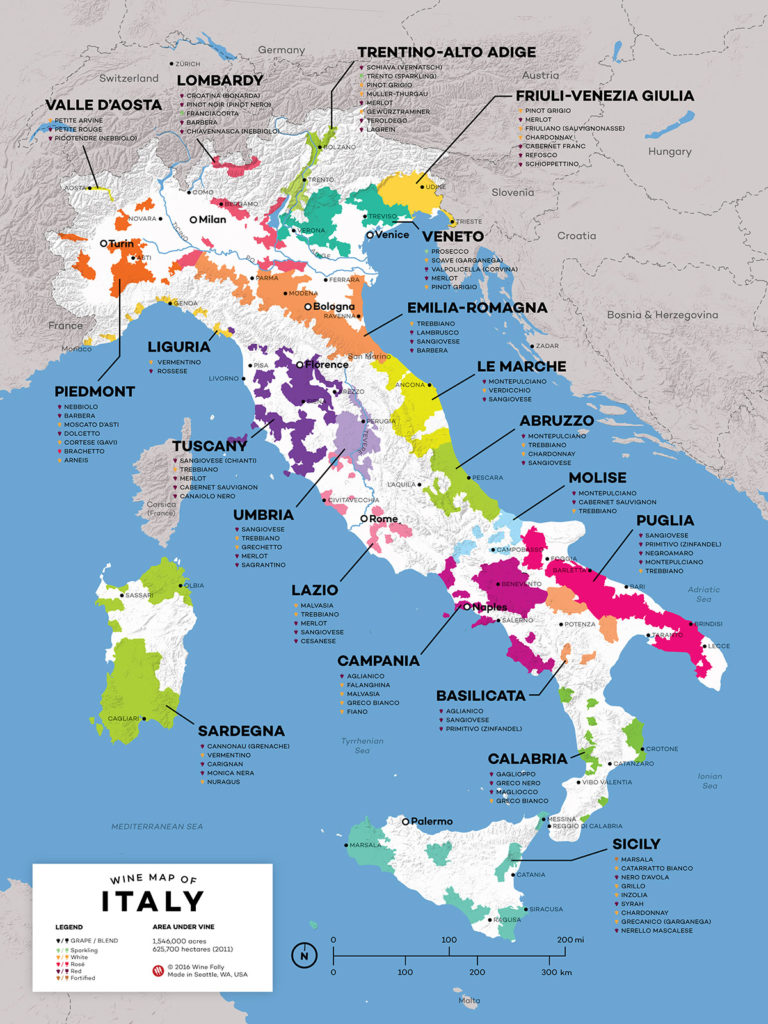
Abruzzo Region of the Wine Country of Italy
The Abruzzo region is on the east coast of central Italy on the Adriatic Sea. This region is also known for its red wines. Cerasuolo d’Abruzzo and Montepulciano d’Abruzzo, as well as the white wine Trebbiano d’Abruzzo. These wines are the region’s most notable, followed by the lesser-known Controguerra. The primary grape varieties used are the native red Montepulciano and white Trebbiano (Ugni Blanc). A few international varieties also such as Chardonnay, Cabernet Sauvignon, and Merlot, and natives such as Sangiovese, Passerina, Pecorino, and Cococciola round out the varieties. The usual maturation process for Abruzzo wine is in oak casks and barrels.
Aosta Valley Region or Valle D’Aosta
The Aosta Valley Region is on the border between France and Switzerland in northern Italy. It is also the smallest region of winemaking in Italy and also has the sparsest population. They are small but have a wide variety of wines with the most important of these being Picotendro. Which happens to be the local form of Nebbiolo grapes. They are heavily influenced by France as well as French grape varieties are just as common here as Italian varieties. Chardonnay and Gamay grow alongside the native varieties Nebbiolo and Dolcetto. Other varieties grown here are Petit Rouge, Fumin, Vien de Nus, Prie Blanc, Moscato Bianco, as well as Pinot Grigio. The reds producing a taut, spicy wine. The whites producing fruity wines in both dry and sweet varieties.
Wine Country of Italy
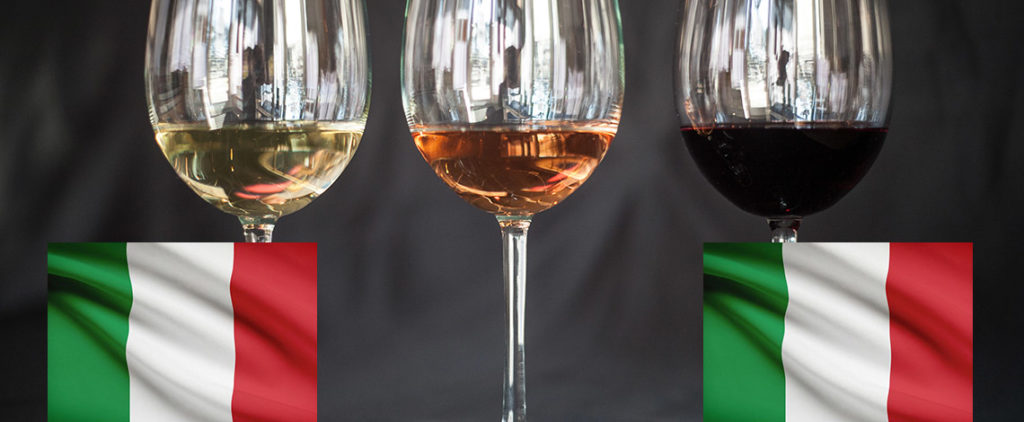
Basilicata Region
Nestled above the arch of the Italian boot in Southern Italy you will find the Basilicata Region. It is also the most mountainous region of winemaking in Italy. The Aglianico grape is the most celebrated grape of the region. But they also have very pleasant examples of Moscato, and some superb Malvasia. As well as, Primitivo, Sangiovese, Montepulciano, and Bombino Nero. The most important red wines produced are the Rosso, Rosso Riserva, Rosato, Primitivo, and Moro. The white wines are Greco, Bianco, and Spumante. The Aglianico grape makes up about 83% of the wine production in this region.
Calabria Region
The Calabria region is a large peninsula between the Ionian Sea and the Tyrrhenian Sea. It is also the tip of the boot or, the most southern part of the Italian mainland, northeast of the island of Sicily. The ancient Greeks cultivated the first vineyards here. For many centuries Calabrian wines were famous not just in Italy, but also in other European countries. This region also had a Phylloxera bug infestation that decimated its wine industry in the early 20th century. They still haven’t recovered. Their Ciro wine is the only Calabrian wine to earn great respect in the 20th and early 21st Centuries. But their other high-quality wines are Ciro Rosso Riserva and the Greco di Bianco. The most important red grapes are Gaglioppo and Greco Nero grape varieties. White wines are from Greco Bianco, Trebbiano Toscano, and Malvasia Bianca grapes.
Wine Country of Italy

Campania Region
The Campania Region is in the area around Naples Italy on the coast of the Tyrrhenian Sea. This region is also famous for producing Falerno (Falernum), one of the most ancient wines in Italy. The grapes used in this region are Aglianico, which is also the grape behind the region’s two most famous and respected red wines. Also the Taurasi and Aglianico del Taburno, as well as, the Aglianico which were introduced to the area by the Greeks. Later cultivated by the Romans. Also vital to Campania’s vineyards are the white-wine varieties Fiano and Greco grapes. These grapes produce the region’s most respected white wines, Fiano di Avellino and Greco di Tufo.
Wine Country of Italy

Emilia-Romagna Region
The Emilia-Romagna Region is one of the highest producing regions. It surrounds the city of Bologna and is situated in northern Italy between the Apennine Mountain range and the Adriatic Sea. So, this is one of the older wine regions of Italy. Vines were brought to this region by the Etruscans. Later cultivated by the Romans. The grape varieties used here are the Vitis labrusca primarily, but other varieties include Malvasia and Lambrusco, as well as, Trebbiano, Barbera, Bonarda and of course Sangiovese. The most notable wines of this region are Salamino di Santa Croce, di Sorbara, Grasparossa di Castelvetra, Modena as well as Reggiano.
Friuli-Venezia Giulia Region
The Friuli-Venezia Giulia Region is situated in the far northeastern part of Italy on the Slovenia border. The region’s wines stand out noticeably from other Italian wines. Because they are from mostly non-traditional grape varieties. These include Sauvignon Blanc, Riesling, and Pinot Bianco, but also some typically Italian grapes such as Pinot Grigio and the Picolit. The most important wines from this region are Colli Orientali del Friuli Picolit a sweet white from Picolit and Verduzzo grapes.
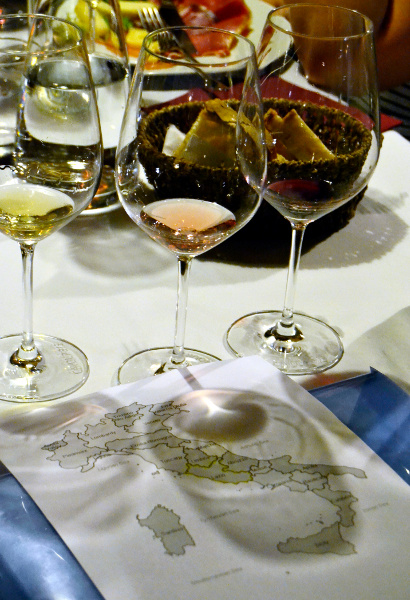
Lazio Region
Surrounding the City of Rome you find the Lazio Region. The Lazio region has an ancient vineyard heritage. First settled by the Etruscans but it was the Latins who gave the area its original name Latium. It’s also fascinating that a tiny people group called Latins with a city called Rome built a vast empire. Their language was used for the first Bible, the Latin Vulgate. The volcanic hills of this region provide excellent soil for vineyards thanks to the fertile and also porous (well-drained) land. Nourishment for the grapes is provided by lava and soils rich in potassium. This type of soil is also great for white grapes. The primary grapes grown in this region are the Trebbiano and Malvasia di Candia. There most important wines are the Castelli Romani (the most important), Frascati, and Est! Est!! Est!!! di Montefiascone.
Liguria Region of the Wine Country of Italy
The Liguria Region is a small region along the coast of northwestern Italy on the Ligurian Sea. This region is a.k.a. the Italian Riviera. Regardless of this difficult terrain and environment. Vines have been grown in this area for more than 25 centuries. Liguria remains the region with the second-lowest output of wine in Italy due to the harsh environments for vineyards. The vineyards were introduced by the Etruscans and Greeks to this region. Then the Romans took up viniculture. The region is known for its white wines made from Vermentino grapes. These white wines have a fragrant nose, pine-wood, and sea-salt aromas, as well as, an underlying minerality. The primary red wine is made from Rossese grapes, which creates subtle, fruity and spicy wines.
Wine Country of Italy

Lombardy Region
One of Italy’s largest and most populous regions is the Lombardy Region but it only has two wine styles of particular note. First a red Valtellina and also a sparkling Franciacorta. The majority of its wines are produced under lesser-known titles. Located at the heart of northern Italy near the Swiss border. This region is also known for its sparkling Oltrepo Pavese Metodo Classico. But also for its Pinot Grigio. The western banks of Lake Garda generate distinctive Garda as well as Lambrusco Mantovano wines. These red wines are made with Valpolicella’s Rondinella grapes. South of Lake Garda is the home of Lugana wine, a star wine boasting lively, as well as a crisp white wine from Trebbiano di Lugana grapes.
Marche Region
Also known as the Le Marche Region is a region on the eastern side of central Italy along the Adriatic Sea. Marche’s vineyards also cover around 60,000 acres. The bulk of this wine is for sale as Vino di Tavola or Indicazione Geografica Tipica. Marche is best known as a white-wine region although it is also home to some reds of very high quality too. But the leading white grape varieties here are the Trebbiano and the Verdicchio grapes. The wines they create are characterized by lively acidity and subtle herbaceous undertones. They are an excellent food-friendly wine, especially with seafood. The red wines of Marche are generally made from Montepulciano and Sangiovese grapes. These dark-skinned varieties also dominate central Italian red wines. In this region, they make the intensely fragrant Rosso Conero Riserva wine.
Molise Region
Also, on the east side of Italy along the Adriatic and inland is the Molise Region. Molise was also a relatively obscure region until they developed two important wines, Biferno, and Pentro di Isernia, in the 1980s. Biferno wines are produced in this region and include reds, whites, and roses. The white blends comprise mainly Trebbiano Toscano grapes with a smaller portion of Bombino. The reds also use Montepulciano grapes combined with a little Aglianico and some Trebbiano Toscano grapes. Pentro di Isernia also produces all three, although its red blend consists of a Montepulciano/Sangiovese mix. The other grapes used are Aglianico, Cabernet Sauvignon, Chardonnay, Falanghina, Montepulciano as well as the native Tintilia.
Wine Country of Italy
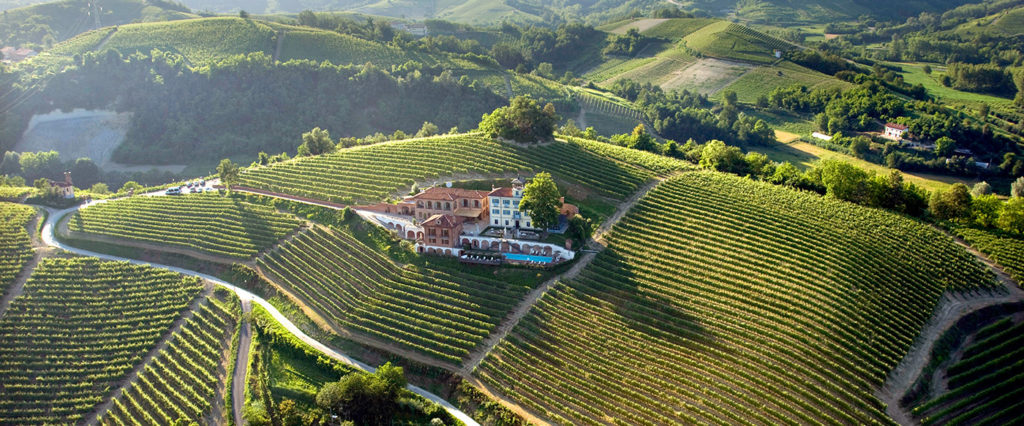
Piedmont (Piemonte) Region
The Piedmont or Piemonte Region is clearly among the world’s very finest wine regions. Located in the northwestern area of Italy near the French border. Among the most well-known and hence respected names in winemaking are Barolo, Barbaresco, and Barbera d’Asti. Although this region is famous for its austere, tannic, and floral red wines made from Nebbiolo grapes. The Piedmont’s greatest success story in the past decade has been sweet, white, sparkling Moscato d’Asti wine. These unmatched wines are also matured in oak casks and barrels. The Piedmont is also known as a red-wine region. It produces several well-regarded white wine styles too.
Puglia Region
The Puglia Region encompasses the boot heal up to the boot spur of Italy along the Adriatic Sea. The region is also responsible for almost half of Italy’s total olive-oil production and has a long-held reputation as a prolific source of red wines. This region was known for its mass-produced unexceptional wine. But the call for wine improvements has greatly improved the quality of wine from this region. The wines made in the southern portion of Puglia are from grape varieties almost exclusively unique to the area. North of the bootheel the prevalent grapes are those used all over central and northern Italy such as Sangiovese and Montepulciano grapes. The Verdeca grape is the only example of white grapes in the region.
Wine Country of Italy

Sardinia Region
The Sardinia Region is located on the island of Sardinia westward across the Tyrrhenian Sea from the Italian mainland. It’s also the second-largest island in the Mediterranean Sea. The physical separation of the Sardinians from the mainland is present in their winemaking. They don’t use the same grapes as their neighbors on the mainland. Because they use varieties of grapes found in France and Spain. Grapes like the Grenache (called Cannonau in Sardinia), Carignan, Bovale di Spagna, Bovale Grande, Cabernet Sauvignon, and Muscat Blanc. The island also uses several obscure and also fairly exclusive varieties of grapes, including Torbato, Semidano, Niederra, Nuragus, Monica and Nasco. The most familiar wines of this region are Cannonau di Sardegna and Vermentino di Sardegna.
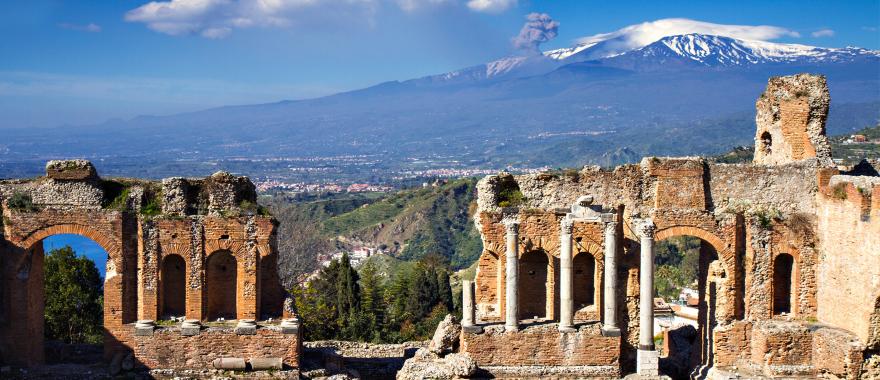
Sicily Region Of the Wine Country of Italy
The Sicily Region is not only a wine region but the largest island in the Mediterranean Sea. Separated from the mainland by the Messina Strait. Winemaking in Italy started here and moved north. They were once famous for sweet Muscats wines, and Marsala, but the island’s best-known wines are now its dry table wines under the regional title, Terre Siciliane. The warm, dry climate, as well as well-ventilated areas, benefit from coastal breezes. So, mildews and rots are kept to a minimum. Consequently, this low pest and low disease environment make chemical sprays scarcely needed. So, a great deal of Sicilian wine is from organic grapes. On their lower slopes and the coastal plains, you get the wines Siracusa, Noto, Eloro, and Vittoria. The western part of Sicily produces the following wines Alcamo, Contessa Entellina, Delia Nivolelli, Erice, Menfi, Monreale, Salaparuta, Santa Margherita di Belice, and Sciacca.
Trentino-Alto Adige
Situated in a valley near the Austrian border lays the Trentino-Alto Adige Region. It’s a narrow region that follows the river Adige through the Italian Alps. Trentino-Alto Adige is composed of two provinces. Trentino is almost entirely Italian speaking, while Alto Adige has a predominantly German-speaking population. The wines from the region reflect these cultural differences, as well as, topographical complexity. The Germanic wine grape varieties such as Müller-Thurgau and Sylvaner are predominant. But there are also increasing quantities of Pinot Grigio, Chardonnay, Pinot Noir, Pinot Bianco, Sauvignon Blanc, and the red Bordeaux varieties.
Wine Country of Italy
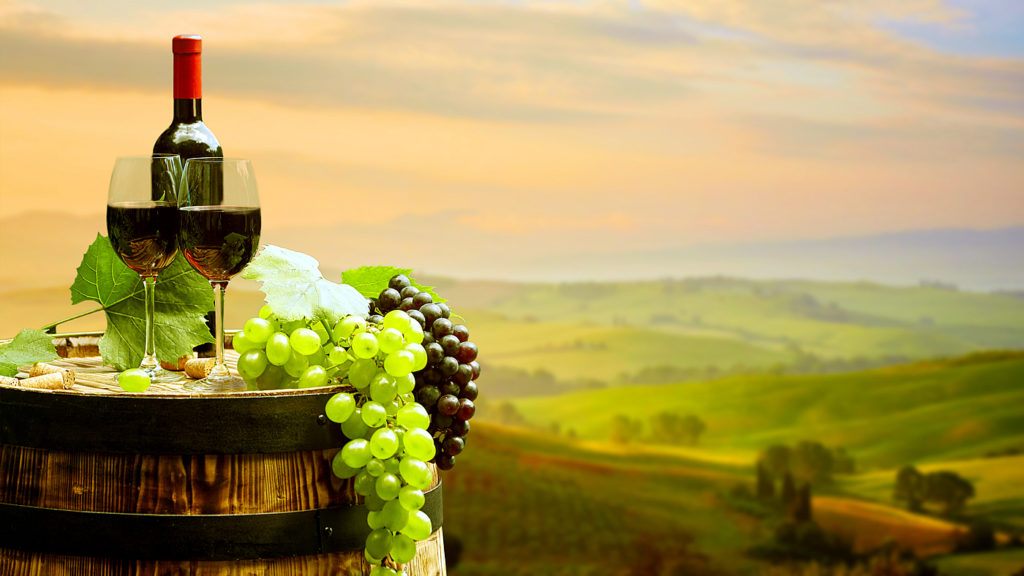
Tuscany Region
The Tuscany Region is the most continuously famous of all Italian wine regions and one of the most ancient. Today, Tuscany is also one of the most prolific wine regions anywhere in Europe. They have an amazing red wine Called Elba Aleatico Passito, and also dry whites such as Vernaccia di San Gimignano and the sweet wine Vin Santo. The Sangiovese grape is the mainstay variety in almost all of Tuscany’s top red wines. They also utilize Chianti grapes, as well as, Canaiolo, Colorino, Cabernet Sauvignon, and Merlot. The climate is vital in this region’s success as a wine region. They have warm, temperate coastal areas. As well as inland areas where temperature variations help to maintain the grapes’ balance of aromatics, sugars, and acidity.
Umbria Region
In the heart of the Italian peninsula is the Umbria Region. Consequently, it is in the only Italian region without a coastline or international border. Best known for its white wine production with its predominant Orvieto wine made from Trebbiano grapes. Styles of Orvieto can diverge from the dry Secco wine to semi-sweet Amabile and also other sweet wines. The native red grape Sagrantino has predominance in the Montefalco area. Hence, it creates wines of great power and depth. The best examples are Paolo Bea or Arnaldo Caprai, which rival any wines from Italy. The other grapes used in this region are Cabernet Sauvignon, Merlot, as well as, Pinot Noir for the red wines. Chardonnay for their dry white wines.
Wine Country of Italy

Veneto Region
The Veneto Region is an increasingly important wine region in the northeastern corner of Italy. It sits at the feet of the Italian Alps both north and also west of Venice. This region also produces more wine than any other Italian wine region. This region produces a fruity red Valpolicella wine which complements its intense Amarone wine and sweet Recioto wine. Veneto also has refreshing white wines, such as Soave and sparkling Prosecco. Valpolicella grapes are the key red variety and the Garganega and Trebbiano are the key white wine grapes in the Veneto Region. Other grape varieties also include Merlot, Cabernet Sauvignon, Cabernet Franc, Pinot Noir, Carmenere, Pinot Grigio, and Tocai Friulano.
Twenty Regions Make Up the Wine Country of Italy
This 20 Region tour of the Wine Country of Italy was exhausting. I had the idea that they would have vast and varied regions, but I never imagined 20 Regions. The topography is vast and varied. The culture is vast and varied and the types of wines are unique, vast and diverse. I personally have never had Italian wine, but even if I had, the next bottle could and probably would be much different. So, Italy is truly an amazing place to grow a vast variety of grapes to create a vast variety of wines.
References
- The history of wine in Italy. (n.d.). Retrieved from http://sedimentality.com/wine-history/the-history-of-wine-in-italy/
- Italian Wine Regions. (2018, June 5). Retrieved from https://www.wine-searcher.com/regions-italy
- Italian wine, Italian wine production, wines of Italy, DOC, DOCG, IGT, Italian wines. (n.d.). Retrieved from https://www.understandingitaly.com/wine.html
- Map of Italian Wine Regions. (2018, May 10). Retrieved from https://winefolly.com/review/italian-wine-regions-map/
I hope you enjoyed this brief tour of the Wine Country of Italy. If you would like, you can also read my wine tours of France and Germany too. Just tap on the highlighted links.
Let me leave you with this traditional Italian wine drinks cheer – Solute!


